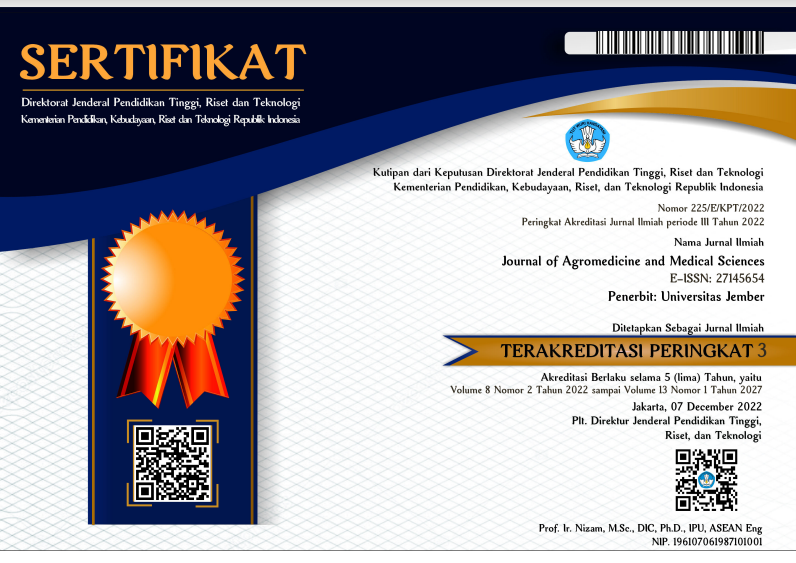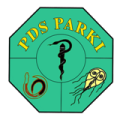In Silico Test Potential of Bromelain and Actinidin Enzymes as Proteolytic againts Cataract-forming Proteins
DOI:
https://doi.org/10.19184/ams.v10i2.25496Abstract
A cataract is the development of an opacity within the lens that can cause blindness. Cataracts are caused by the aggregation of crystallin proteins, which are water-soluble proteins that make up 80% of all lens proteins. Crystallin protein aggregation can occur due to several mechanisms such as the formation of amyloid fibrils (associated with senile cataract) and P23T mutations (associated with congenital cataracts). Currently, surgery is the only cataract treatment available. Although it is the best treatment, surgery requires high cost and is not free from complications. Therefore, alternative treatments for cataracts are needed, such as the use of natural ingredients that have proteolytic properties. Pineapple contains bromelain and kiwi contains actinidin. Both enzymes are protease which destabilize and inhibit the formation of aggregates. So that those enzymes can potentially lyse the protein causes cataracts. To prove the potency of the enzymes, we consucted an insilico study using Cluspro docking online program. We investigate the binding energy of each enzymes with the amyloid fibril and P23T mutation. The results of Cluspro docking between Bromelain Enzyme and Actinidin Enzyme with P23T mutation protein respectively are -696.2 Kcal/mol and -750.8 Kcal/mol. The results of Cluspro docking between Bromelain Enzyme and Actinidin Enzyme with amyloid protein are -696.2 Kcal/mol and -750.8 Kcal/mol respectively. Therefore, bromelain enzyme had a better ability to bind to amyloid protein, while the actinidin enzyme had a better ability to bind to the P23T D-crystallin mutation protein.
Keywords: ClusPro, Molecular Docking, Bromelain, Actinidin, Cataract, SwissModel























